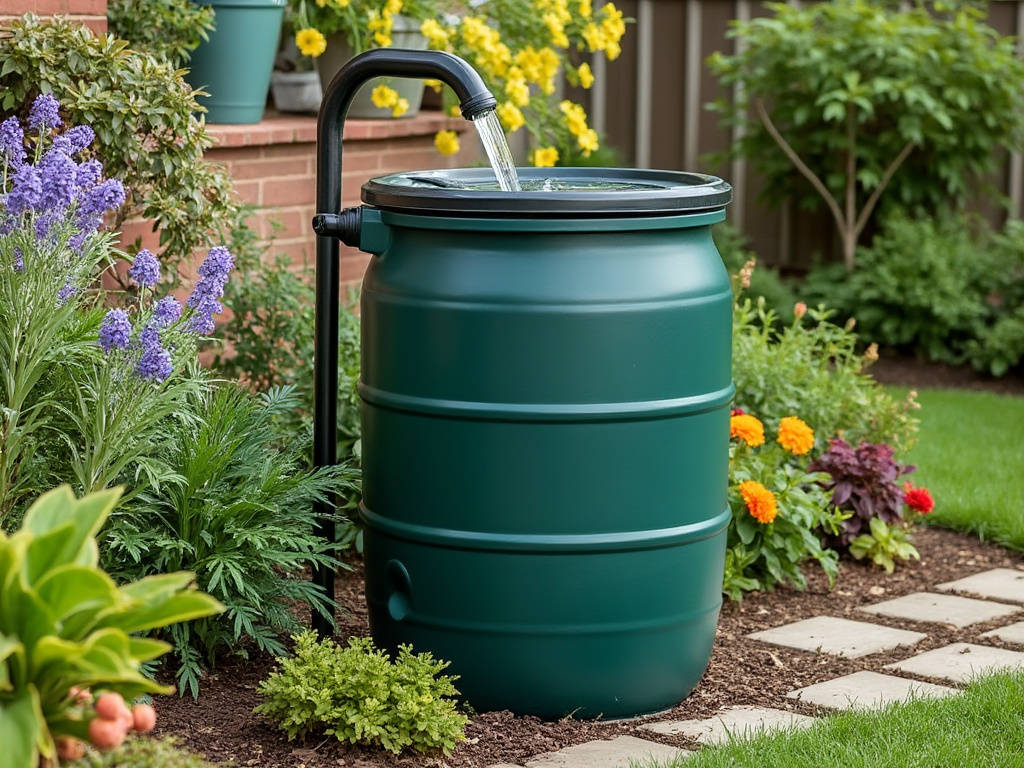
Collecting rainwater for your garden is an environmentally friendly practice that can also help reduce your water bills. Here are some steps and tips on how to set up a rainwater harvesting system:
Basic Setup:
- Check Local Regulations: Before you start, make sure there are no legal restrictions or requirements for rainwater collection in your area.
- Choose a Collection Area: Typically, your roof is the best place to collect rainwater because it’s large and relatively clean. Ensure your roofing material is safe for collecting water intended for plants (avoid roofs with asbestos, lead, or treated wood).
- Install Gutters and Downspouts: If you don’t already have them, install gutters around the edge of your roof to capture the runoff. Make sure the gutters slope towards the downspouts.
- Rain Barrel or Cistern:
- Rain Barrel: The simplest method is to place one or more rain barrels at the end of your downspouts. You can buy rain barrels or make one from a large drum or container. Ensure it has:
- A lid or screen to keep out debris, insects, and prevent mosquito breeding.
- An overflow valve or mechanism to direct excess water away from your foundation when the barrel is full.
- A tap or spigot at the bottom to connect a hose or fill watering cans.
- Cistern: For larger storage, you might consider a cistern, which can be above or below ground. This requires more complex installation, often involving digging and possibly pumps if it’s underground.
- Rain Barrel: The simplest method is to place one or more rain barrels at the end of your downspouts. You can buy rain barrels or make one from a large drum or container. Ensure it has:
- Filtering:
- First-Flush Diverters: These devices can be installed to divert the first flow of water which might contain contaminants from the roof. After this first flush, the cleaner water is then directed into your storage.
- Screen Filters: Place at the entry point of the downspout into the barrel to keep leaves and larger debris out.

- Water Treatment: If you’re concerned about contaminants, you might want to use filters or UV light systems, but for garden use, this usually isn’t necessary unless you suspect chemical contaminants.
- Usage:
- Connect a hose to the spigot for direct garden watering or use watering cans.
- For raised gardens or if your barrels are elevated, you can use gravity to your advantage for watering.
- Maintenance:
- Regularly check and clean gutters, filters, and the rain barrel itself.
- Ensure that the system doesn’t become a breeding ground for mosquitoes by keeping it sealed or using mosquito dunks (Bti, a bacteria toxic to mosquito larvae but safe for plants and animals).
- Winter Precautions: If you live in a cold climate, empty or protect your rain barrel in winter to prevent freezing and cracking.
Tips:
- Elevate Your Rain Barrel: If possible, elevate your barrel for better water pressure when using gravity to feed your hose.
- Link Multiple Barrels: If you need more capacity, you can link several barrels together with connecting hoses.
- Aesthetic Integration: Design your setup to be visually appealing if it’s in a visible part of your garden. Some rain barrels come in decorative forms or can be painted.
- Safety: Ensure that any elevated system is secure to prevent tipping or falling, especially if there are children around.
By following these steps, you’ll be able to efficiently collect and utilize rainwater, making your garden more sustainable and potentially saving on water costs.

